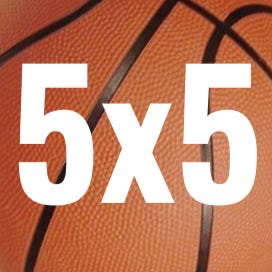Saying yes to sports on Substack
While sports media goes through a transformation, it can thrive with a new model
My favorite party game is asking strangers for their hottest take. There’s one going around right now that I love: This is the best time to cover sports for a living.
A surface-level look at the industry might indicate that’s absurd. Over in legacy media, there are the ESPN layoffs, the New York Times shuttering its sports section, and desperate attempts by other publications to become content farms. Meanwhile, the sports posts that rise to the top of my social feeds are … uninspired. Graphics captioned “People forget 2018-19 Blake Griffin was DIFFERENT 😤.” Videos of fans competing to name more NFL quarterbacks whose first names start with the letter A. Carousels with questionable breaking-news items.
The traditional, advertising-based business model is broken beyond repair, and large social media platforms have made their business model work in a way that simply can’t value quality or depth. Sounds pretty bleak!
But more and more, I’m hearing that spicy take from some of the smartest sports journalists I know: If you provide great analysis on a league, irreplaceable coverage of a local team, or deeply entertaining podcasts about utter sports nonsense, it’s actually never been easier to build an audience and make money doing it. I couldn’t agree more. And after a long stint managing top writers at ESPN, it’s why I’m now here at Substack to cultivate the best independent sports journalism in the world.
Look at the people who already are succeeding on the platform:
wins awards for thoughtfully reflecting on LeBron James passing his scoring record. ’s readers eagerly await his posts on baseball and whatever else interests him. Brett Favre shares bar-fight stories with . unearths the humanity you don’t see on the field. does his thing on Wemby. And a growing number of local sports publications thrive by giving fans trusted insights week after week.I’m psyched to welcome four more stellar sports publications to Substack this week.
, , and run , an essential college football podcast covering the ins and outs of America’s most unhinged sports league. ’s Rose Garden Report brings Portland Trail Blazers fans everything they need through sharp analysis and diligent reporting. UCLA quarterback Chase Griffin just launched , a space to highlight the voices and market power of college athletes. And , a behind-the-scenes ally to ESPN’s NBA talent and the mastermind behind ideas that transformed the digital sports discourse, is now publishing his own work with the same mission.These journalists distribute their work across all kinds of platforms, and they increase their reach by taking advantage of partnerships outside of Substack. But they’re choosing to build their digital base and community here, because this is where the most exciting coverage and sharpest thinking is happening. Writers and creators are free to take chances and go deep on an idea, to chase a story they were told was off-limits. And they’re supported by a dedicated community of thousands of paying subscribers dunking on each other in chats during live games, referring their friends to join, and starting Substacks of their own. It’s a revolution, and we’re just getting started.
We’re saying yes to sports stars
As a senior editor at ESPN, I saw my role as an advocate for talent, helping writers avoid a stream of requests that catered to sports fans’ base desires. It wasn’t easy. Often this approach was at odds with the incentive structure of a legacy media machine that defers to shallow narratives and resists new voices. Big, old organizations bend in one direction, and that’s not the direction of innovation or inspiration.
Writers held a perpetual fear of grinding away on a passion project only to see it get buried and forgotten about. So we’d finagle ways to Trojan-horse nuance and personality into a palatable package. Even then, I had to say no to a lot of ideas I believed in but couldn’t feasibly greenlight.
A couple months into working at Substack—identifying sports media stars, supporting their growth strategy, and advising on creative direction—I’m thrilled by how often I can say yes. Yes, that extremely niche blog idea sounds fascinating and there’s an audience for it. Yes, this is the best home for a WNBA player’s podcast. Yes, a legacy journalist can take the next step in their career by opting for independence. Yes, you can build a real community with other sports sickos that makes a Game 5 loss slightly more tolerable.
We’re saying yes over here. Yes, this is the best time to cover sports for a living. On Substack, the top sports personalities will break news, analyze transactions, and share insights that make you smarter. Athletes, coaches, and team executives will reveal what really goes on behind the scenes. Podcasters will make funny, challenging, and outrageous shows. When it’s time to draft your fantasy football roster next season, you’ll develop your strategy here. And when you’re at home watching your team play, you’ll hop into the Substack app to cheer, complain, joke, and commiserate with a community of fans who come for the same thing.
The best version of those conversations will live on Substack. Come join us.











As someone that covers German football (soccer), I got to say that Substack has been excellent for catering to a small but passionate fan base with newsletters and podcasts. Our content would probably get lost on google or social media, but people keep finding us on here and we couldn’t be happier with the support from the network.
I run a grassroots football blog covering the game in Berkshire (UK), we’ve got our ducks in a row and while we’re far from making millions, the site has the highest traffic levels it ever has and I would completely concur with this piece.